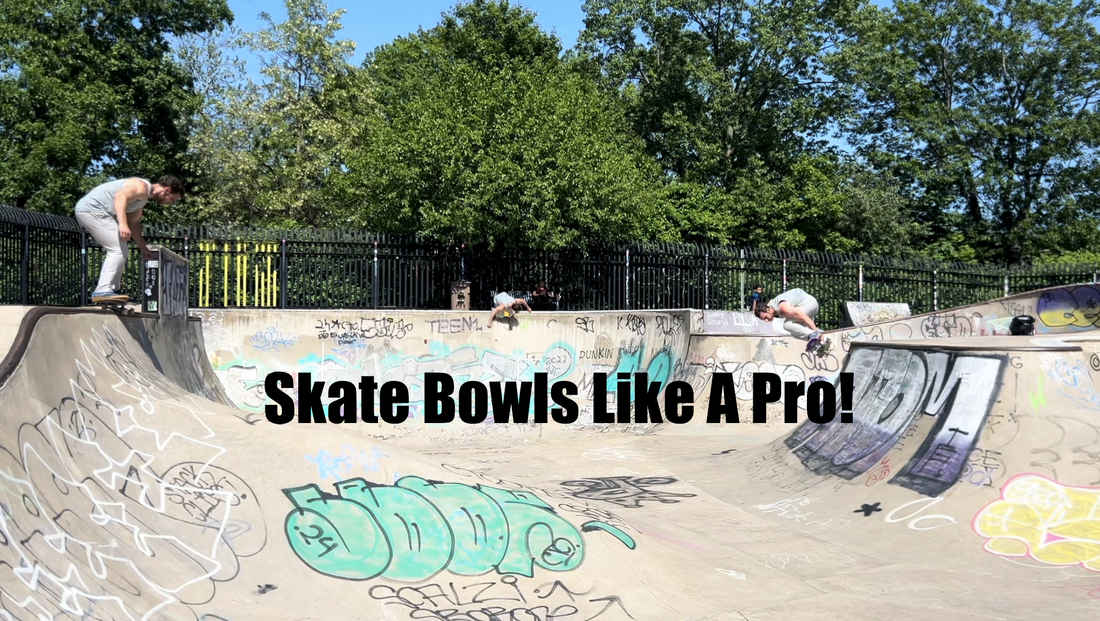How to Skateboard in a Bowl: A Beginner's Guide to Shredding Transitions
If you’ve already got the basics of skateboarding down and you're looking to level up your skills, learning how to skateboard in a bowl is one of the most exciting—and rewarding—challenges you can take on. Bowl skating is all about flow, speed, and mastering transition. In this guide, we’ll break down everything you need to know to get started skating in bowls safely and confidently.
What Is Bowl Skating?
Bowl skating refers to riding in smooth, curved concrete or wooden structures that resemble empty swimming pools. Bowls are a staple in modern skateparks and offer skaters the chance to pump, carve, and perform tricks using the transition walls.
Whether you're aiming to cruise around for fun or eventually throw down airs and grinds, learning how to skateboard in a bowl is a major milestone in any skater’s journey.
Why Learn Bowl Skating?
-
Improves balance and control on transitions
-
Builds speed without pushing
-
Enhances overall flow in skateparks
-
Opens up new tricks like rock-to-fakies, slash grinds, and airs
Gear You’ll Need
Before you drop in, make sure you’re set up with the right gear:
-
Helmet – A must for protecting your head
-
Knee pads, elbow pads, and wrist guards – Bowl falls can be rough
-
Proper skateboard – Look for a wider deck with solid trucks and softer wheels for better grip and control
Step-by-Step: How to Skateboard in a Bowl
1. Get Comfortable with Transitions
Before hitting the deep end, spend time riding small quarter pipes or mini ramps. Learn how to kick turn, pump, and carve—these skills translate directly to bowl skating.
2. Start in the Shallow End
When you're ready to enter the bowl, start in the shallowest part. Roll in or drop in (if you’re ready) and focus on simply riding back and forth. Your goal is to maintain balance and feel how your board responds to the curves.
3. Learn to Pump
Instead of pushing with your foot, use pumping to gain speed. As you go up a wall, bend your knees and extend as you reach the bottom. This motion helps you build momentum naturally.
4. Practice Carving Turns
Carving means making large, sweeping turns in the bowl. Use your shoulders to guide your board while keeping your knees bent for stability. Try carving up one side, then flowing into a turn and riding to the opposite wall.
5. Work on Line Choice
As you get more confident, begin to plan your lines (paths through the bowl). Avoid going straight up and down—learn to move diagonally across the bowl to keep speed and avoid collisions.
6. Drop In (When You're Ready)
Dropping in can be intimidating but is essential for bowl skating. Start with smaller transitions and work your way up. To drop in, place your tail firmly on the coping, lean forward with commitment, and keep your knees bent.
Tips for Bowl Beginners
-
Look ahead, not down at your board
-
Stay low with bent knees to improve balance
-
Ride with flow, not force—bowl skating is about rhythm
-
Don’t be afraid to fall—just wear your pads and fall smart
Common Mistakes to Avoid
-
Standing up too straight—this can throw you off balance
-
Rushing into deep bowls before you're ready
-
Not committing when dropping in
-
Failing to pump—you’ll lose speed fast
Next Steps: Progressing in the Bowl
Once you're comfortable riding the bowl, try:
-
Rock to fakies
-
Axle stalls
-
Slash grinds
-
Frontside and backside airs (for advanced skaters)
These tricks require confidence, speed, and flow—all of which you'll develop naturally as you continue practicing.
Final Thoughts: How to Skateboard in a Bowl with Confidence
Learning how to skateboard in a bowl takes time, patience, and a lot of falls. But once you get the hang of it, the feeling of carving perfect lines and flowing through transitions is unbeatable. Start small, wear your pads, and practice consistently. Soon, you'll be riding the bowl like a pro.
Ready to get started? Grab your board, hit the park, and drop in!

